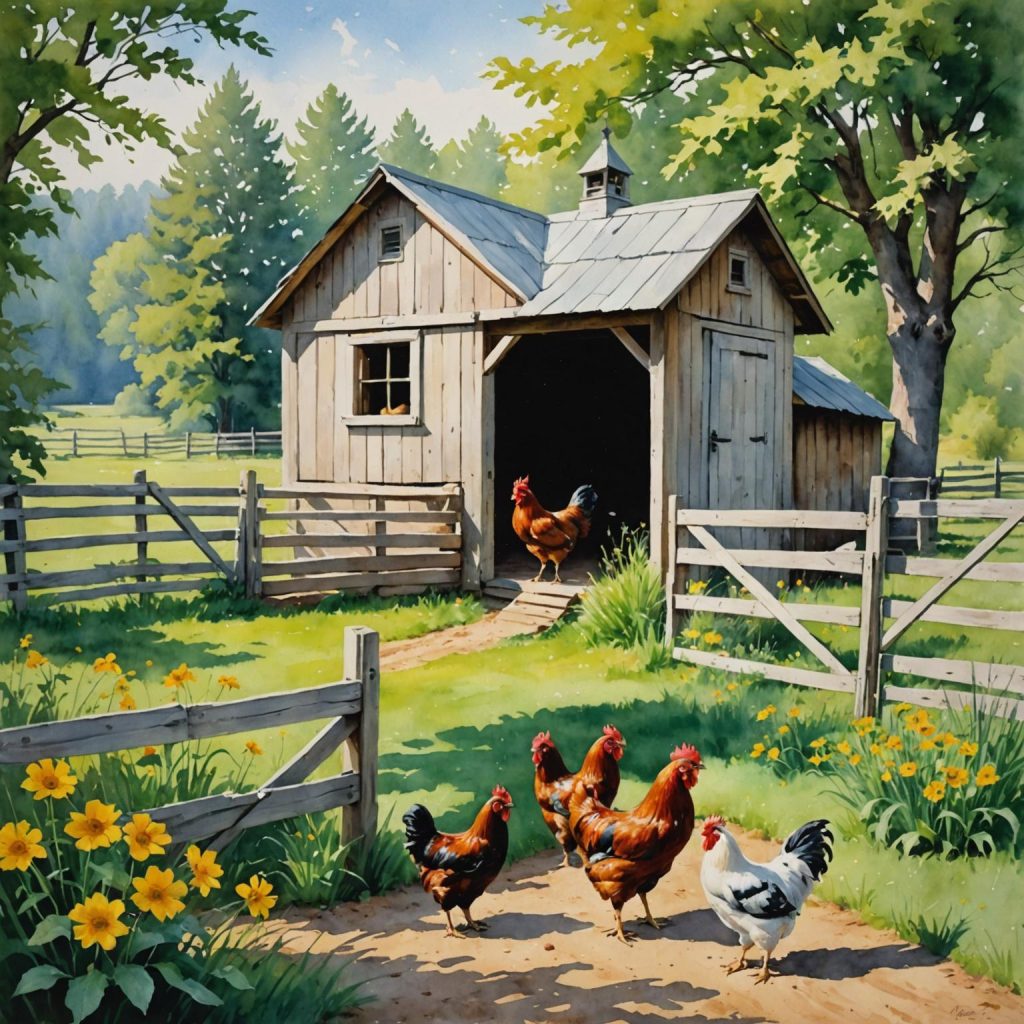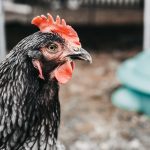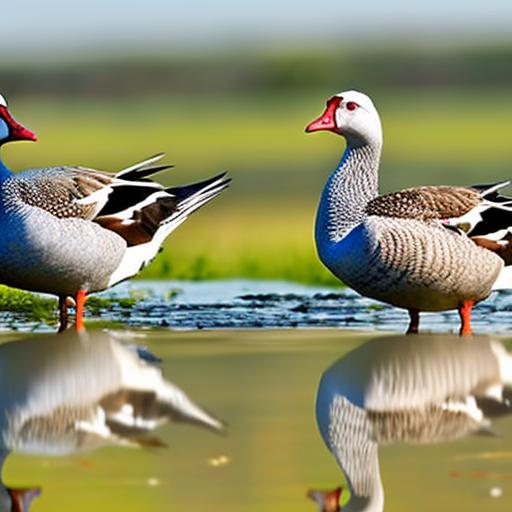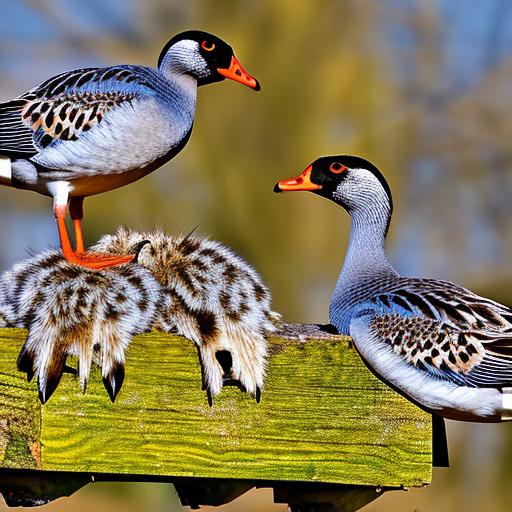Chickens are vulnerable to a wide range of predators, both large and small. Some of the most common predators include foxes, raccoons, coyotes, hawks, owls, snakes, and even domestic dogs. Each of these predators poses a unique threat to your flock, and it’s important to understand their behavior and habits in order to effectively protect your chickens. For example, foxes are known for their cunning and ability to dig under fences, while raccoons are skilled climbers and can easily access a poorly secured coop. Hawks and owls are aerial predators that can swoop down and snatch a chicken in the blink of an eye, while snakes can slither into the coop and prey on eggs and chicks. By familiarizing yourself with the common predators in your area, you can take proactive measures to keep your chickens safe from harm.
In addition to wild predators, it’s important to be aware of the threat posed by domestic animals such as dogs and cats. Even well-meaning pets can pose a danger to chickens if left unsupervised, so it’s crucial to take steps to ensure that your flock is protected from all potential threats. By understanding the behavior and habits of common predators, you can take proactive measures to secure your coop and protect your chickens from harm.
Table of Contents
- 1 Securing the Coop: Tips for Building a Predator-Proof Chicken Enclosure
- 2 Using Guardian Animals: How Livestock Guardian Dogs and Other Animals Can Help Protect Your Flock
- 3 Implementing Deterrents: Natural and Artificial Methods to Keep Predators at Bay
- 4 Nighttime Protection: Strategies for Keeping Chickens Safe from Nocturnal Predators
- 5 Monitoring and Surveillance: Using Technology and Observation to Keep an Eye on Potential Threats
- 6 Dealing with Predators: What to Do If Your Flock is Attacked and How to Minimize the Risk in the Future
Securing the Coop: Tips for Building a Predator-Proof Chicken Enclosure
Building a predator-proof chicken enclosure is essential for keeping your flock safe from harm. There are several key factors to consider when designing and constructing a secure coop, including the materials used, the layout of the enclosure, and the security measures in place. One of the most important aspects of a predator-proof coop is the use of sturdy materials that are resistant to tampering and damage. This includes using heavy-duty wire mesh for fencing, solid wood for the walls and roof, and secure latches and locks on all doors and windows. It’s also important to consider the layout of the enclosure, ensuring that there are no gaps or weak points where predators could gain access. This may involve burying wire mesh underground to prevent digging, installing predator-proof roofing to prevent aerial attacks, and adding additional barriers such as electric fencing or motion-activated lights.
In addition to the physical structure of the coop, it’s important to consider other security measures such as predator-proofing the feed and water sources, using automatic door closers to prevent access at night, and regularly inspecting the enclosure for signs of wear or damage. By taking a proactive approach to securing your coop, you can greatly reduce the risk of predation and keep your chickens safe from harm.
Using Guardian Animals: How Livestock Guardian Dogs and Other Animals Can Help Protect Your Flock
Livestock guardian animals such as dogs, llamas, and donkeys can be valuable allies in protecting your flock from predators. These animals are bred and trained to protect livestock from harm, and their presence alone can act as a deterrent to would-be predators. Livestock guardian dogs, in particular, are known for their loyalty, intelligence, and protective instincts, making them an excellent choice for keeping chickens safe. These dogs are often raised with the flock from a young age, forming strong bonds with the chickens and instinctively patrolling the perimeter of the enclosure to ward off potential threats. In addition to dogs, other animals such as llamas and donkeys can also be effective at deterring predators due to their size, strength, and territorial nature.
When using guardian animals to protect your flock, it’s important to provide them with proper training, socialization, and care to ensure that they are effective at their job. This may involve working with a professional trainer to teach them how to behave around chickens, introducing them to the flock gradually, and providing them with adequate shelter, food, and veterinary care. By incorporating guardian animals into your predator protection plan, you can add an extra layer of security to your coop and help keep your chickens safe from harm.
Implementing Deterrents: Natural and Artificial Methods to Keep Predators at Bay
In addition to physical barriers and guardian animals, there are several natural and artificial deterrents that can help keep predators at bay. One of the most effective natural deterrents is the presence of other wildlife such as birds of prey or larger predators that may scare off potential threats. For example, installing bird feeders or nesting boxes for owls can encourage these natural predators to frequent your property, which can help deter smaller aerial predators such as hawks. Similarly, allowing larger predators such as coyotes or bobcats to roam in the vicinity of your property can discourage smaller predators from venturing too close.
In addition to natural deterrents, there are also several artificial methods that can help keep predators at bay. This may include using motion-activated lights or sound devices to startle potential threats, installing predator-proof fencing or netting around the perimeter of the property, or using chemical deterrents such as predator urine or pepper spray. By combining natural and artificial deterrents, you can create an environment that is less appealing to predators and reduce the risk of predation on your flock.
Nighttime Protection: Strategies for Keeping Chickens Safe from Nocturnal Predators
Nocturnal predators such as raccoons, foxes, and owls pose a significant threat to chickens during the night when they are most vulnerable. In order to protect your flock from these nighttime threats, it’s important to take proactive measures to secure the coop and prevent access by potential predators. This may involve installing automatic door closers that shut at dusk and open at dawn, ensuring that all windows and vents are securely closed at night, and using motion-activated lights or alarms to startle nocturnal predators. It’s also important to regularly inspect the coop for signs of wear or damage that could provide an entry point for predators, such as holes in the fencing or gaps in the roof.
In addition to securing the coop itself, it’s also important to consider the behavior of your chickens at night and provide them with a safe place to roost. Chickens naturally seek out high perches at night to avoid ground-dwelling predators, so providing them with secure roosting bars or platforms inside the coop can help keep them safe from harm. By taking proactive measures to protect your flock from nocturnal predators, you can greatly reduce the risk of predation and ensure that your chickens are safe and secure at all times.
Monitoring and Surveillance: Using Technology and Observation to Keep an Eye on Potential Threats
Monitoring and surveillance are essential components of any predator protection plan, allowing you to keep an eye on potential threats and take proactive measures to keep your flock safe. There are several ways to monitor your property for signs of predation, including using technology such as security cameras or motion-activated sensors. These devices can provide real-time footage of potential threats and alert you to any suspicious activity around the coop. In addition to technology, regular observation of your property can also help you identify signs of predation such as tracks, scat, or feathers that may indicate the presence of a predator.
In addition to monitoring for signs of predation, it’s also important to observe the behavior of your chickens for any signs of distress or agitation that may indicate the presence of a predator. This may include listening for alarm calls or observing changes in behavior such as reduced egg production or reluctance to leave the coop. By staying vigilant and monitoring your property for signs of predation, you can take proactive measures to protect your flock and reduce the risk of harm.
Dealing with Predators: What to Do If Your Flock is Attacked and How to Minimize the Risk in the Future
Despite your best efforts, there is always a risk that predators may target your flock. In the event of an attack, it’s important to act quickly and decisively to minimize the risk of further harm. This may involve securing any injured or vulnerable chickens in a safe location, removing any dead or injured birds from the area to prevent further predation, and inspecting the coop for any signs of damage or entry points that may need repair. It’s also important to report any predation incidents to local wildlife authorities or animal control agencies so that they can take appropriate action if necessary.
In addition to dealing with immediate threats, it’s also important to take proactive measures to minimize the risk of future predation. This may involve making adjustments to your predator protection plan based on what you’ve learned from the attack, such as reinforcing weak points in the coop or increasing surveillance around the property. It’s also important to consider factors such as habitat management and predator control measures that can help reduce the overall risk of predation on your property. By taking proactive measures to deal with predators and minimize future risks, you can help ensure that your flock remains safe and secure in the long term.
In conclusion, protecting your chickens from predators requires a multi-faceted approach that includes understanding common threats, securing the coop with physical barriers and guardian animals, implementing deterrents both natural and artificial, providing nighttime protection strategies, monitoring for potential threats through technology and observation, and dealing with predators in case of an attack while minimizing future risks. By taking proactive measures across all these areas, you can greatly reduce the risk of predation on your flock and ensure that your chickens remain safe and secure at all times.
Meet Walter, the feathered-friend fanatic of Florida! Nestled in the sunshine state, Walter struts through life with his feathered companions, clucking his way to happiness. With a coop that’s fancier than a five-star hotel, he’s the Don Juan of the chicken world. When he’s not teaching his hens to do the cha-cha, you’ll find him in a heated debate with his prized rooster, Sir Clucks-a-Lot. Walter’s poultry passion is no yolk; he’s the sunny-side-up guy you never knew you needed in your flock of friends!







